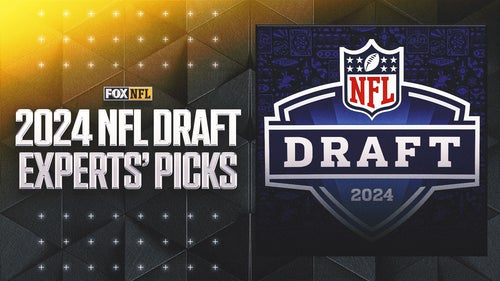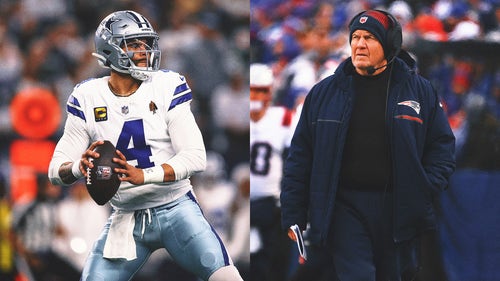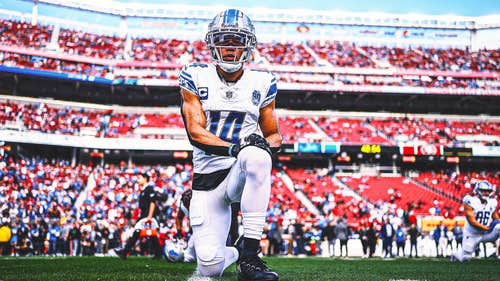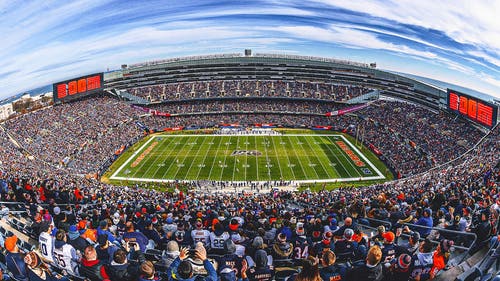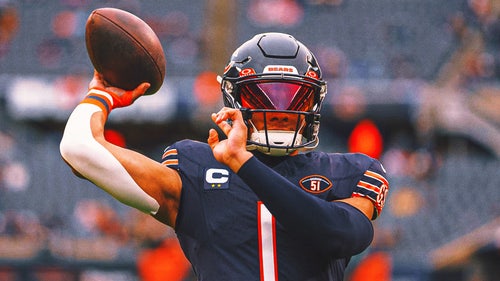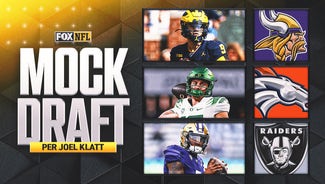
What's next for Aaron Hernandez: Case is even stronger in next trial
Aaron Hernandez walked out of a courtroom Wednesday, convicted by a jury in the 2013 murder of Odin Lloyd, and headed straight back to jail — for life, with no chance of parole — to await another trial in another courtroom in another shooting.
The next case, in which the former New England Patriots star is accused of gunning down two people in 2012 at a South Boston stoplight, is thought to be much stronger than the one that just concluded.
In the Boston case, Suffolk County prosecutors have alleged that a seemingly innocuous slight — a bump on a nightclub dance floor, a spilled drink, a smile but no apology — enraged Hernandez, leading him to follow the men as they were leaving the club and open fire after they stopped for a red light.
Two things in particular make the case stronger than the one Bristol County prosecutors just concluded, said longtime Boston criminal defense attorney Stephen Weymouth.
“You have the murder weapon and you have some eyewitnesses,” Weymouth said. “You don’t know how good they’re going to be — but these are two things they didn’t have in Bristol County.”
Weymouth closely watched the Lloyd case, in which prosecutors lacked both the .45-caliber Glock used in the killing and eyewitnesses — and where they also tried to convince the jury of a motive that was, at best, muddled.
“I’ve always thought the Boston case was stronger than this case,” Weymouth said, “and now I’m thinking it’s an even stronger case.”
It’s been quite a fall for the former NFL star.
He was arrested nine days after Lloyd was shot and killed early the morning of June 17, 2013. That was more than 11 months after the Boston shootings — but that investigation was stalled, and so the second case was the first to go to trial.
In fact, Hernandez wasn’t identified as a potential suspect in the slayings of Daniel De Abreu, 29, and Safiro Furtado, 28, and the wounding of a third man until he was already in the sights of investigators for Lloyd’s murder.
Eleven more months passed before he was indicted in the July 16, 2012 shooting in South Boston.
Now he faces trial on two counts of first-degree murder, three counts of armed assault with intent to murder, assault and battery with a dangerous weapon and unlawful possession of a firearm in the shootings.
That trial is scheduled to begin May 28 in a Boston courtroom, but the judge has indicated he will push it back — possibly into the fall, possibly into 2016 — to give Hernandez’s legal team time to prepare following the conclusion of his first trial.
Sometimes good police work is as much about luck and timing as it is about tactics and thoroughness.
That’s certainly the case in the slayings of De Abreu and Furtado.
For starters, three men in the backseat of the vehicle survived — two without any serious injuries, one with gunshot wounds that turned out not to be life threatening.
All three of them saw at least part of what happened. So did two men who were on their way home, who described a silver sport-utility vehicle with Rhode Island license plates that passed them moments before stopping next to the car that De Abreu was driving. They saw the gunfire and saw the vehicle speed away.
That’s five witnesses who saw at least part of the shooting — five more than prosecutors had in the Lloyd case.
Prosecutors also have the .38-caliber revolver that was used to kill De Abreu and Furtado, thanks to a stunning turn of events. On June 21, 2013, while the Lloyd investigation was in its fourth day and Hernandez was still a free man, state troopers searching a car that had been involved in a wreck in western Massachusetts discovered a handgun in the trunk. After they sent it to a ballistics lab for testing, it was matched to the bullets that killed De Abreu and Furtado.
The woman who had been driving the car had given a ride to a man with ties to a cousin of Hernandez’s, providing a potential trail back to the former football star.
The Boston prosecutors caught other breaks as well.
As with the Lloyd case, they unearthed hours of surveillance camera footage, including images of Hernandez and a companion entering Cure Lounge just behind De Abreu, Furtado and their three friends. The footage also shows Hernandez and his companion arriving in a silver Toyota 4Runner with Rhode Island license plates, which fits exactly with the accounts of those two witnesses who were just up the street when the gunfire erupted.
And prosecutors have the vehicle — during the Lloyd investigation, a search of a home owned by Hernandez’s uncle in Bristol, Conn., led to the discovery of the 4Runner in the garage, its Rhode Island license plates matched to those seen in surveillance footage from the day of the killings.
And, perhaps most stunning, they apparently have Alexander Bradley.
Described in court as Hernandez’s one-time right-hand man, Bradley is the person seen on surveillance video arriving at a parking garage and entering the nightclub with the then-NFL star about two hours before the shooting.
Bradley is also the man who later alleged in a federal lawsuit that Hernandez shot him in Florida in February 2013 after a dispute at a nightclub, then left him for dead in an industrial park. Bradley refused to cooperate in the police investigation — criminal charges were never filed in that case — and he initially dodged efforts to get him to testify before a grand jury in the Lloyd case.
But Bradley, who lost an eye in the Florida incident, eventually was forced to answer questions, and he even took the stand and testified against Hernandez during his trial in Lloyd’s killing.
At Hernandez’s arraignment last May 28 in the Boston killings, First Assistant District Attorney Patrick Haggan made it clear that Bradley was cooperating, describing things that only he would have seen. For instance, he said Hernandez stashed a revolver under the hood of the Toyota before heading to the club.
Haggan alleged that later Hernandez, while driving down the street in front of the club, said, “There they go” after seeing De Abreu and Furtado and their friends walking to a parking garage. At some point, the prosecutor asserted that Hernandez pulled around a corner, opened the hood, and grabbed the gun.
Hernandez then allegedly circled the block, following De Abreu as he drove Furtado and their friends away from the club. Hernandez stopped briefly at a red light, then sped off to catch up with them, then pulled up next to them at a red light on an overpass on Interstate 90, prosecutors have asserted.
At that point, Hernandez yelled out the window, “Yo, what’s up now," then a racial slur, then opened fire, Haggan said at the arraignment.
As he sped away on the Massachusetts Turnpike, Haggan said Hernandez allegedly said, “I think I got one in the head and one in the chest.”
After arriving in Hartford, Conn., a few hours later, Hernandez spent time surfing the Internet and watching the news, looking for news of the killings, Haggan said. And he summoned his cousin, Tanya Singleton, to bring him a different car.
Haggan asserted that the backdrop to the killings was simple: A football star for the local NFL team seethed that he wasn’t given respect he felt he was due while he was out in public.
“Evidence suggests that in the months leading up to July 2012, the defendant had become increasingly sensitive and angered by what he believed to be people who were testing, trying or otherwise disrespecting him when he frequented nightclubs in the area,” Haggan said during the arraignment hearing.
According to Daniel Medwed, a criminal law professor at Northeastern University in Boston, Hernandez’s best hope in the Boston case might be for his attorneys to attack as they did in the Lloyd case, where they convinced Judge E. Susan Garsh that some of the evidence should not be presented to the jury, either because police investigators made critical mistakes collecting it or because it was deemed too prejudicial.
In the Lloyd case, for instance, Judge Garsh did not allow jurors to see the content of four text messages the man sent to his sister in the last minutes of his life. In one he told his sister he was with “Nfl” and then in a follow-up wrote, “Just so u know.”
So the bottom line, according to Medwed, is that while the Boston case appears strong now there are still unknowns — and Hernandez’s attorneys undoubtedly will fight to chip away at the case before a jury is seated.
“We don’t know, because of course, this case seemed pretty darn strong until things started getting thrown out,” Medwed said, referring to the Lloyd case. “’I’m with Nfl … just so you know’ – that’s pretty strong evidence.”
But the jury that convicted Hernandez never heard it.
Even after that second murder trial, Hernandez still has other legal problems.
He faces charges that he possessed an illegal rifle, magazine and ammunition that were found in his home during the Lloyd investigation, that he assaulted another inmate in a jail fight and that he threatened a corrections officer.
Any of those charges has the potential to land him a jail term on top of any sentences in the other cases. Massachusetts abolished the death penalty in 1984.
And so the man who less than two years ago was playing for one of the NFL’s marquee franchises and cashing checks on a $40 million contract will begin his next trial facing life in prison with no chance for parole.






































































































































